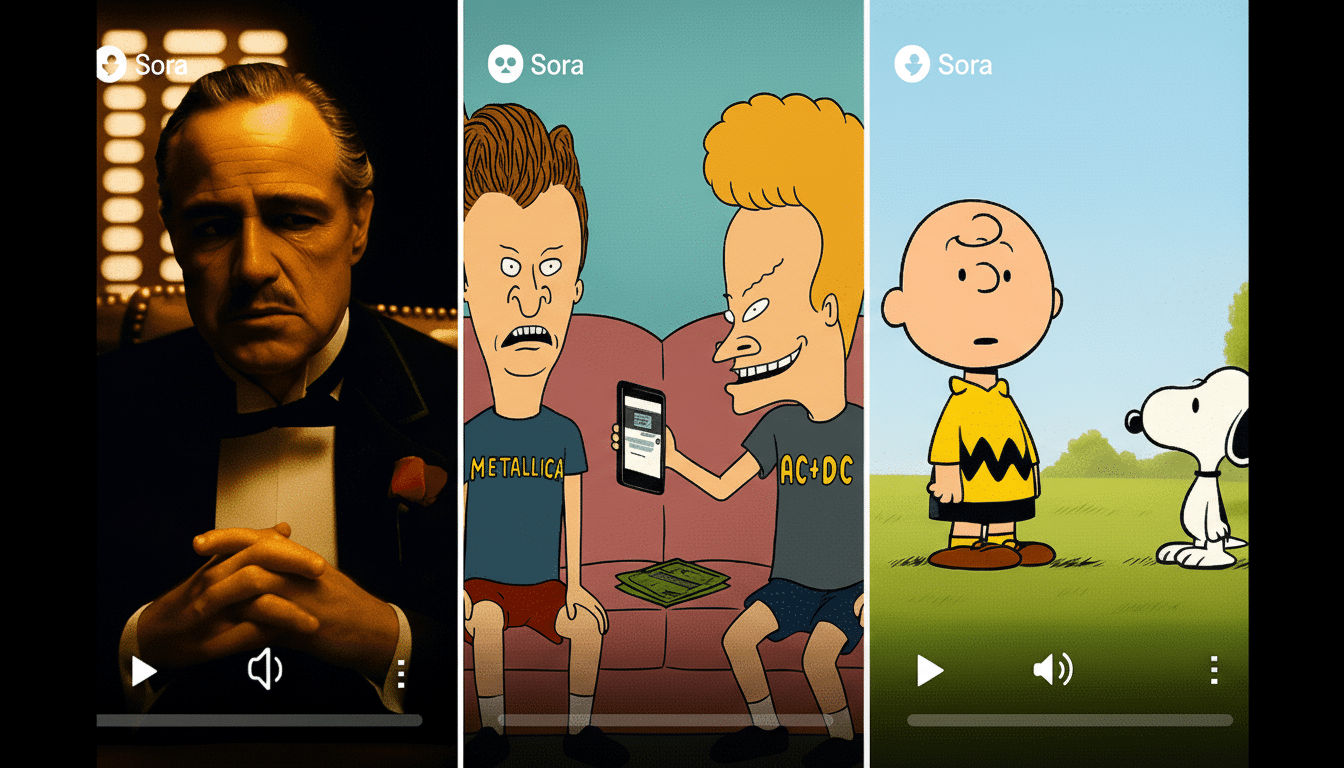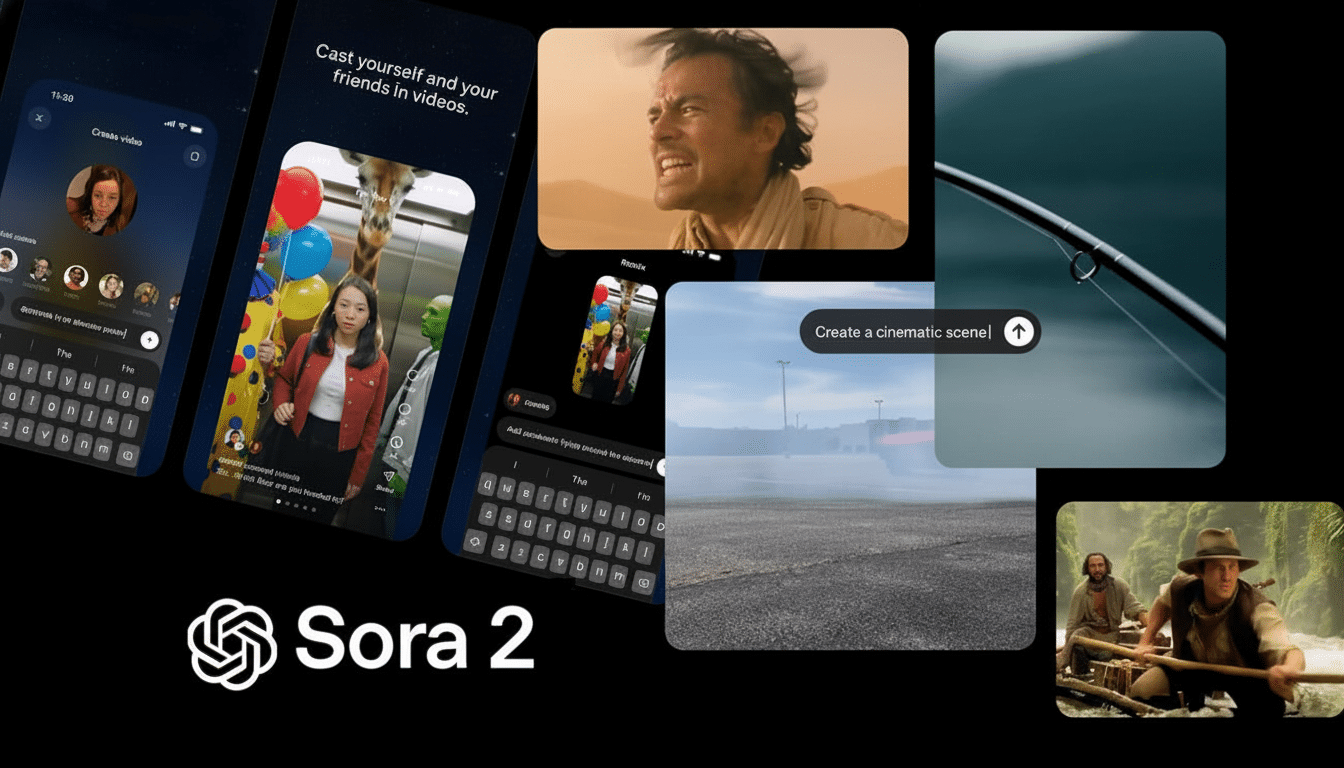AI video is starting to look like film instead of a hallucination, and the latest showdown goes down between OpenAI’s Sora 2 and Google’s Veo 3. We put both through a battery of creative prompts, including cinema-style tracking shots, superhero action, painterly animation with dialogue, and stylized cityscape identity “cameo” videos. The hands-on verdict across fidelity, motion physics, audio, safety, and workflow is final.
How we tested Sora 2 and Veo 3 with real-world prompts
We presented consistent, production-style prompts that aimed to stress real-world use cases: a handheld night scene in Tokyo with shallow depth of field and reflections; a rooftop superhero landing with debris and an orbiting camera; a hand-drawn 2D café scene with line-read dialogue, rain, and cup clinks; a stylized future Times Square; and a likeness-based dancing clip to test identity control. Veo 3 was tested in its best-quality operating setting, and Sora 2 was accessed through the present app workflow.
- How we tested Sora 2 and Veo 3 with real-world prompts
- Visual fidelity and cinematic control in real locations
- Action and physics performance in rooftop hero tests
- Stylization and worldbuilding in Times Square scenes
- Audio quality and lip sync in the animated café test
- Identity control and cameo creation for willing participants
- Safety and copyright handling across AI video models
- Speed, workflow, and production options for creators
- The bottom line on Sora 2 versus Veo 3 for creators

Visual fidelity and cinematic control in real locations
Both models captured very good footage of city scenes, but their camera instincts diverged. Sora 2 chose a tighter crop and wildly shallow depth of field that supported the “mirrorless” aesthetic while obscuring environmental storytelling. I watched Veo 3 prefer a wider lens and slower parallax, saving neon reflections, rain patter, and crowd motion. The result was something closer to a real location shoot with stronger scene geography — a boon for editors who need cutaways and context.
Lens behavior also mattered. From there, I thought Veo 3 did a better job controlling bokeh shape uniformity and exposure roll-off from the center to corners of the frame. The look of Sora 2 was alluring, even chic, but there was a certain tilt toward Instagram-friendly portrait work. For narrative footage that needs to intercut with live-action plates, Veo 3’s compositional discipline is the difference between a demo and an actual shot.
Action and physics performance in rooftop hero tests
Our superhero roof test revealed some weak spots in the reliability category. Sora 2 declined to generate it out of sensitivity to copyright even though the request itself did not specify a character. Veo 3 fulfilled the request, but it faltered when it came to contact physics: cracked bits of concrete would simply disappear instead of spreading out, and a foothold would emerge over a hole. With some immediate tuning it could be better, but the out-of-the-box result already needed some work. Veo 3 claims the category by default, but neither engine nails it perfectly.
Stylization and worldbuilding in Times Square scenes
In a later Times Square vignette that evoked the comic book stylization of Joyce Carol Oates’s “Beasts,” Sora 2 hewed closer to the desired look, but it very often lapsed into little more than slightly animated screens. Veo 3 provided a more dynamic crowd and signage motion, and higher-quality world “breath.” It’s a draw: Sora tops style adherence, while Veo reps scene power.
Audio quality and lip sync in the animated café test
The café animation was a test piece for lip synchronization and multi-track audio sync. Only Veo 3 followed the character brief of a 2D, watercolor appearance; Sora 2 had a more 3D-leaning look. Dialogue in Sora 2 was sometimes trance-like and under-enunciated, but both Veo 3s had more natural pacing and timing with believable lip sync. Both models had rain ambience but did not have the requested cup clinks. For projects that depend on VO timing and emotional cadence to live or die, Veo 3 is comfortably in front.

Identity control and cameo creation for willing participants
Sora 2’s killer app is cameos: mapping out a clip featuring the image of a willing participant is simple and straightforward, and the system also supports bespoke wardrobe and style. Veo’s analogous “ingredients to video” approach is either restricted or funneled through lower-tier models and portrait-only handcuffs, and its safety buffers frequently reject image-based asks with more than two people. When we did our dance test, Veo gave us facial glitches and strange movement choices, while Sora 2 ended up offering a more coherent performance. For social-native content and quick memes, Sora 2 reigns.
Safety and copyright handling across AI video models
Compliance is no longer an addendum; it determines who’s able to ship.
Sora 2 is very conservative with copyrighted characters and will deny borderline requests fairly often. Veo 3 is more permissive and it can create recognizable characters, something that’s both powerful and dangerous for brand or enterprise use. The lenses offered by industry bodies like the Partnership on AI and reports from organizations like the World Economic Forum flag provenance, consent, and watermarking as key to adoption. Depending on your risk tolerance, Sora’s rejections might not be a bug but a feature.
Speed, workflow, and production options for creators
Veo 3 also comes with separate modes that are suited for throughput vs fidelity, which is handy when you’re iterating look-dev before deciding on a hero render. In practice, we also found Veo’s controls around aspect ratios and multi-shot batches to be more production pipeline friendly. The app-first design of Sora 2 is fun and social, but at the moment its priority is more on shareability than micro-level craft controls.
The bottom line on Sora 2 versus Veo 3 for creators
If you really need professional footage—advertising, previsualization, game trailers, or editorial inserts—Veo 3 is the obvious winner. It provides high-quality scene composition, movement coherence, and audio–lip sync with modes for both quick ideation and quality output. Sora 2 excels when the brief is personal and playful — in the case of cameo-driven clips — but beyond that subversive category, it faces style drift, stricter refusals, and less control.
The big picture is in line with where the market is going. But “pro-audio-quality video” survey results such as Wyzowl’s State of Video Marketing report reinforce that video is also core to brand communication, and buyers will not compromise on quality nor safety controls over edit-ready footage. Those balances have shifted; Veo 3 gets the upper hand now. Sora 2 is fun, sometimes magical, on the days where you’re not using it for ANY type of filming and marketers who need to ship work. Veo 3 is the one that’ll get sniped over there from my cold dead hands (which should be a long time away).

